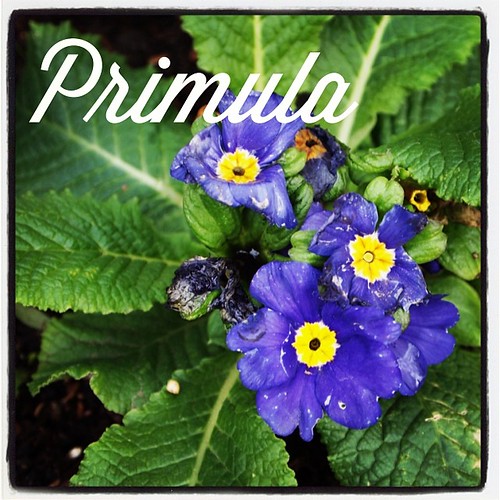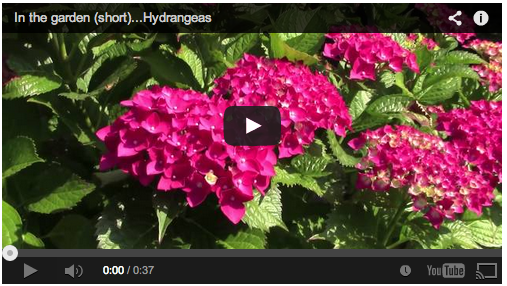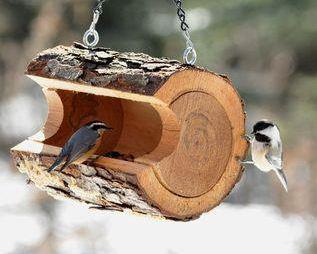Garden Alphabet: Primula (Primrose)
These may be small plants and flowers, but their striking colors make them stand out wherever they bloom. Along with these blue and yellow primula, the owners had also planted some bright yellow ones that really caught the eye. I liked the color combination best on this one, even if the blooms were a bit beyond their prime.
Primula
Primula /ˈprɪmjʊlə/[1] is a genus of mainly herbaceous[2] flowering plants in the family Primulaceae. They include the familiar wildflower of banks and verges, the primrose (P. vulgaris). Other common species are P. auricula (auricula), P. veris(cowslip) and P. elatior (oxlip). These species and many others are valued for their ornamental flowers. They have been extensively cultivated and hybridised – in the case of the primrose, for many hundreds of years. Primulas are native to thetemperate northern hemisphere, south into tropical mountains in Ethiopia, Indonesia and New Guinea, and in temperate southern South America. Almost half of the known species are from the Himalayas.[2]
Genus Primula has about 500 species in traditional treatments, and more if certain related genera are included within its circumscription.[3]
Primula is a complex and varied genus, with a range of habitats from alpine slopes to boggy meadows. Plants bloom mostly during the spring, with flowers often appearing in spherical umbels on stout stems arising from basal rosettes of leaves; their flowers can be purple, yellow, red, pink, blue, or white. Some species show a white mealy bloom (farina) on various parts of the plant.[2] Many species are adapted to alpine climates. — Wikipedia
- Acanthus
- Amaryllis
- Azalea
- Banana
- Bonsai
- Bougainvillea
- Brugmansia
- California Poppy (Eschscholzia californica)
- Calla Lily (Zantedeschia aethiopica)
- Castor Bean (Ricinus)
- Caltapa
- Clematis
- Camellia
- Currant (Ribes)
- Dahlia
- Datura
- Japanese Cherry (Prunus serrulata)
- Daffodil (Narcissus)
- Dietes (Fortnight Lily)
- Dudleya
- Echinacea
- Ecualyptus
- Freesia
- Grape (Vitis vinifera)
- Hibiscus (Malvaceae)
- Iris
- Kniphofia “Red Hot Poker”
- Lantana
- Kousa Dogwood (Cornus kousa)
- Magnolia x soulangeana (Saucer Magnolia/Tulip Tree)
- Marigold (Calendula officinalis)
- Matilija Poppy (Romneya)
- Morning Glory (Convolvulaceae)
- Nandina
- Orange
- Orchid from the Southern California Spring Garden Show 2013
- Oriental Poppy (Papaver orientale)
- Polygonatum (Solomon’s Seal)
- Paperwhites
- Queen Anne’s Lace (Daucus carota)
- Rudbeckia
- Salvia
- Squirrel
- Succulents
- Sweet Potato (Ipomoea batatas)
- Tomato
- Water Lily (Nymphaeaceae)









